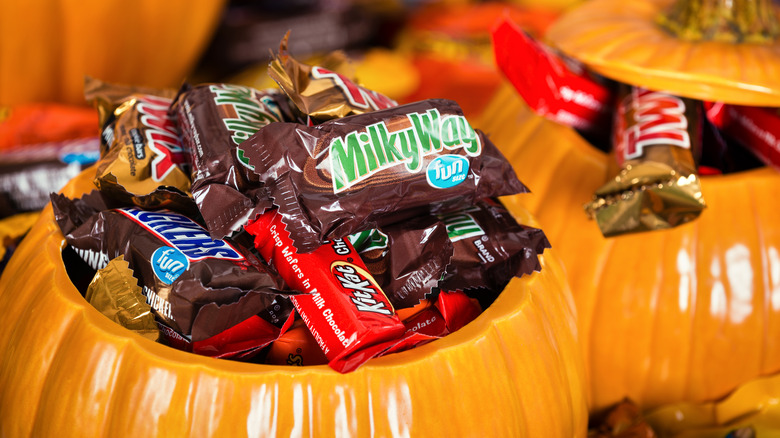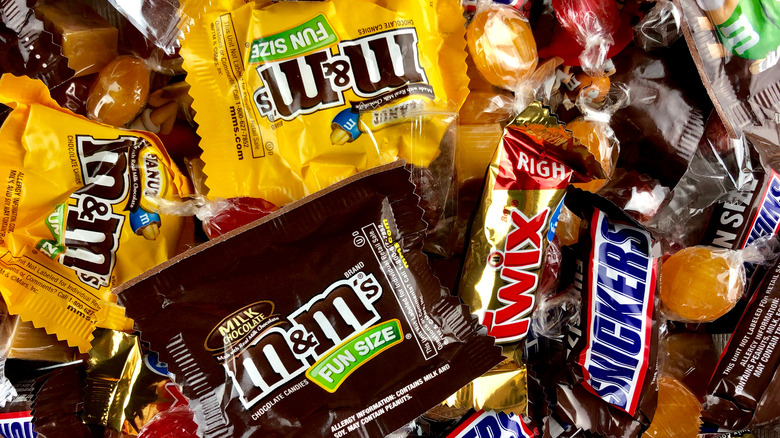How The Great Depression Led To Fun-Size Halloween Candy
Halloween evolved from Samhain, a Celtic festival involving costumes and bonfires, according to History. Participants in the festival hoped to ward off evil spirits in Ireland. As Irish immigrants came to America in the late 1800s, fleeing the Irish Potato Famine, they helped to popularize the celebration in the States. People began dressing up in costumes and going door-to-door, asking for food or money.
As the holiday became more about neighborly relationships and community, trick-or-treating became popular sometime between the 1920s to 1950s. The theory went that people could give out candy in order to prevent any tricks from being played on them.
Fun-size candy bars have become a staple for trick-or-treaters, and are the perfect quick bite to satisfy your sweet tooth when you don't have the appetite for a full-size candy bar. Though small candies can be found being passed out at many houses on Halloween now, that wasn't always the case: Fun-size candy bars were actually invented thanks to a need for a smaller sweet.
A sugar shortage led to smaller sizes
Though several candy bars we know and love today were around in the 1930s, according to TIME, candy companies were struggling with the high cost of sugar to produce full-sized bars. The Curtiss Candy Company began experimenting with creating smaller versions of its already popular candies, using "junior" in the name to indicate the smaller, more affordable sizes to customers. They even offered an even smaller "buddie" size, according to Tedium.
Mars — the company that makes M&Ms, Snickers, and Twix, among others — didn't begin selling smaller candies until 1961. Though the company originally added "junior" to its candy names, in 1968, it was switched to "fun size." Tedium reports that the popularity of Mars' fun-size candies led to other companies jumping on the trend in order to increase sales for Halloween.
Mars didn't take kindly to being copied and filed for a trademark of the "fun-size" term in 1971, then sued Curtiss Candy Company. Mars tried to trademark the term "fun" to ensure its victory in the case, but the case was paused without a definite decision. TIME reports that the Mars trademark of "fun" ended in 1998, and though the "fun size" trademark is still active, companies today have been allowed to share the name.

